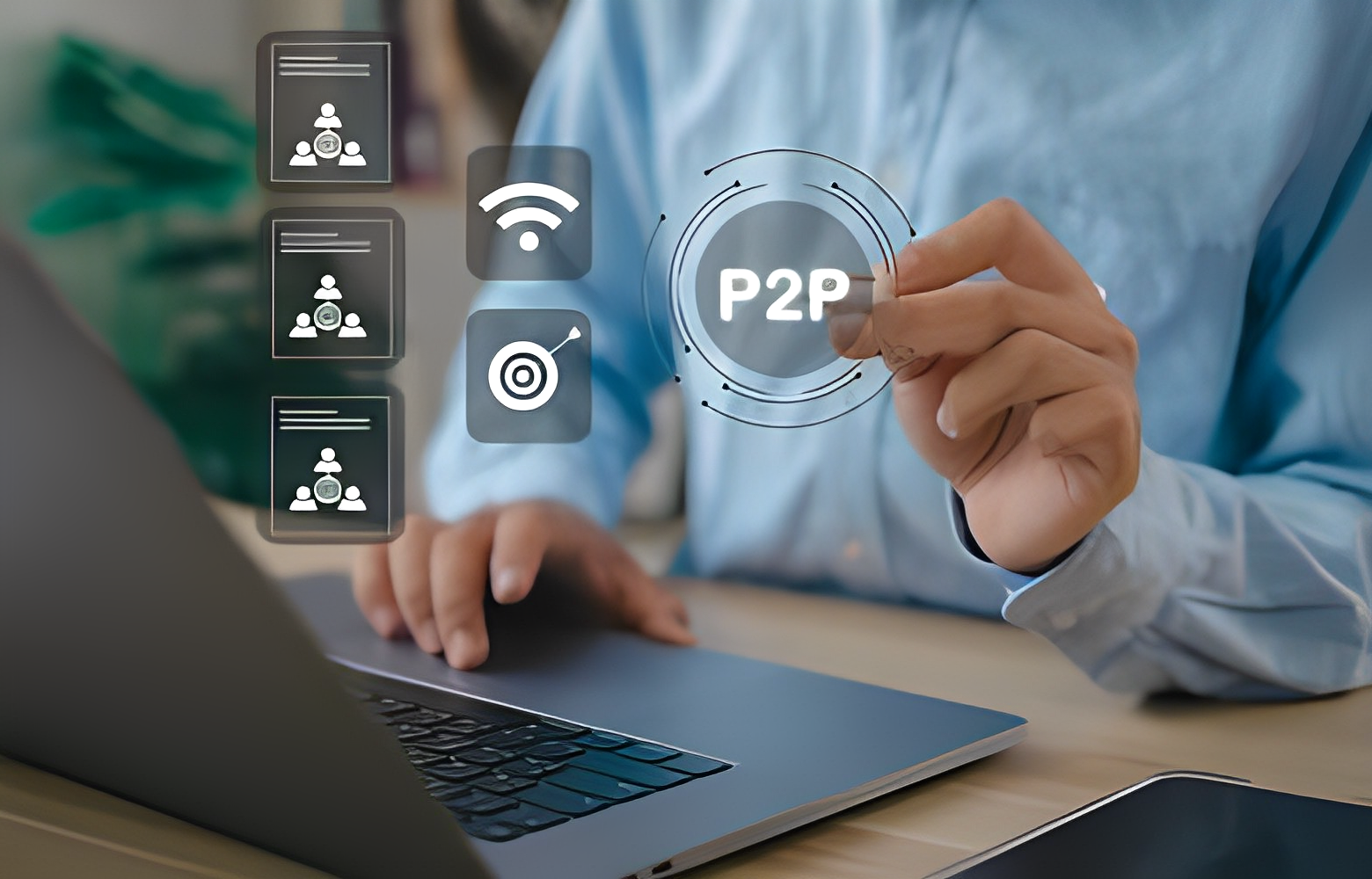Forget the long queues, stringent paperwork, and impersonal interactions of traditional bank loans. In India, a financial revolution is brewing – Loans P2P, or peer-to-peer lending, is reshaping the borrowing and lending landscape. But what exactly is Loans P2P, and how can it benefit you?
Demystifying Loans P2P: Borrowing and Lending Simplified
Loans P2P cuts out the middleman – the banks. Instead, it directly connects borrowers with individual investors through online platforms. Think of it as a virtual marketplace where borrowers post loan requests and investors browse for opportunities to earn returns. This model brings unique advantages for both sides:
For Borrowers:
- Accessibility: Loans P2P opens doors for borrowers who might not qualify for traditional loans due to low credit scores or limited financial history.
- Competitive Rates: Borrowers often secure lower interest rates compared to banks, especially for good credit profiles.
- Flexibility: Loan terms and amounts can be more flexible on Loans P2P platforms, adapting to specific needs.
- Faster Turnaround: Say goodbye to lengthy bank processes. Loans P2P platforms can offer quicker loan approvals and disbursements.
For Investors:
- Higher Returns: Loans P2P offers potentially higher returns on investments compared to traditional saving instruments.
- Diversification: Spread your financial wings by investing in multiple loans and mitigating risk.
- Control: Choose loan types and interest rates that align with your risk appetite and investment goals.
- Direct Impact: Make a tangible difference by supporting individuals and businesses directly through Loans P2P.
The Indian Loans P2P Landscape: Thriving and Evolving
India’s Loans P2P market is witnessing exponential growth, fueled by increasing internet penetration, financial literacy, and a need for alternative lending options. The Reserve Bank of India (RBI) has also established regulations to ensure transparency and investor protection, boosting confidence in the sector.
However, Loans P2P is still in its early stages, and potential investors must exercise caution. Thoroughly research platforms, understand individual borrower profiles, and carefully assess associated risks before investing.
Exploring Loans P2P: Is it Right for You?
Whether you’re seeking a loan for personal needs, education, or business expansion, Loans P2P offers a compelling alternative. Consider these factors before diving in:
- As a Borrower: Assess your creditworthiness, compare interest rates across platforms, and choose a loan amount that aligns with your repayment capacity.
- As an Investor: Understand your risk tolerance, diversify your portfolio, and invest only what you can afford to lose.
Loans P2P: A Promising Future for Indian Finance
With its potential to bridge the credit gap, empower borrowers, and offer attractive returns, Loans P2P is poised to disrupt the traditional financial landscape in India. As the market matures and regulations evolve, Loans P2P promises to become a mainstream financial tool, democratizing access to credit and creating new investment opportunities for all.
Beyond the Hype: Challenges and Opportunities for Indian P2P Lending
While the promise of Loans P2P in India is undeniable, navigating the terrain demands a cautious optimism. Beyond the rosy picture painted by rapid growth and attractive returns, challenges lurk that require both borrowers and investors to tread carefully.
The Shadow Side of P2P: Risks and Regulations
One significant hurdle is the inherent riskiness of the P2P model. Unlike banks, which rely on established credit assessment methods and collateralized loans, P2P platforms often operate on limited data and uncollateralized lending. This exposes investors to the potential of defaults, particularly in a nascent market like India where credit bureau coverage remains patchy.
Regulatory frameworks, while evolving, are still finding their footing. While the RBI’s regulations provide a basic framework, concerns remain about enforcement and the efficacy of investor protection mechanisms. The absence of a secondary market for loan assets further restricts liquidity and exit options for lenders.
Building Trust: Transparency and Education
To thrive, Indian P2P needs to prioritize transparency and investor education. Platforms must ensure robust due diligence processes, readily accessible borrower information, and clear communication of risks and returns. Investors, on the other hand, need to adopt a responsible approach, understanding the difference between P2P and traditional investments and diversifying their portfolios to mitigate risk.
Technology can play a crucial role in fostering trust and efficiency. AI-powered credit scoring can improve borrower profiling, while blockchain could enhance transaction security and transparency. Building bridges with traditional financial institutions, through data sharing and co-origination models, can further boost confidence and broaden reach.
Beyond the Money: The Socioeconomic Impact of P2P
The potential of Loans P2P transcends mere financial transactions. In a country like India, with large swathes of the population excluded from formal banking channels, P2P can be a powerful tool for financial inclusion. By providing access to credit for underserved segments like MSMEs and rural communities, P2P can fuel entrepreneurship, create jobs, and spur economic growth.
Furthermore, P2P lending can foster a sense of community and shared prosperity. Investors can directly support individuals and businesses they believe in, creating a more ethical and impact-driven investment landscape. This aligns with the growing movement towards conscious capitalism and ESG (Environmental, Social, and Governance) investing.
The Road Ahead: Embracing Transformation
The evolution of Indian P2P will likely be fueled by innovation, collaboration, and regulatory refinement. As technology evolves, platforms will develop new lending models and risk management tools, catering to diverse borrower needs and risk appetites. Partnerships with established financial institutions can expand reach and provide valuable expertise.
The RBI’s continued engagement with the sector, while ensuring investor protection, should encourage responsible growth and innovation. A focus on financial literacy and investor education will empower individuals to make informed decisions and reap the benefits of P2P while mitigating risks.
Ultimately, the success of Indian P2P hinges on its ability to strike a delicate balance between innovation and risk management, financial inclusion and investor protection. By addressing the challenges, embracing technological advancements, and fostering a culture of transparency and responsibility, Loans P2P can truly revolutionize the financial landscape of India, creating a more inclusive and prosperous future for all.
Sources:
- Reserve Bank of India: https://www.rbi.org.in/commonperson/English/Scripts/FAQs.aspx?Id=2484
- Federation of Indian Micro and Small & Medium Enterprises: https://fisme.org.in/
- International Finance Corporation: https://www.thehindu.com/business/Economy/finance-minister-urges-world-bank-arm-ifc-to-scale-up-lending-to-india/article65910677.ece




